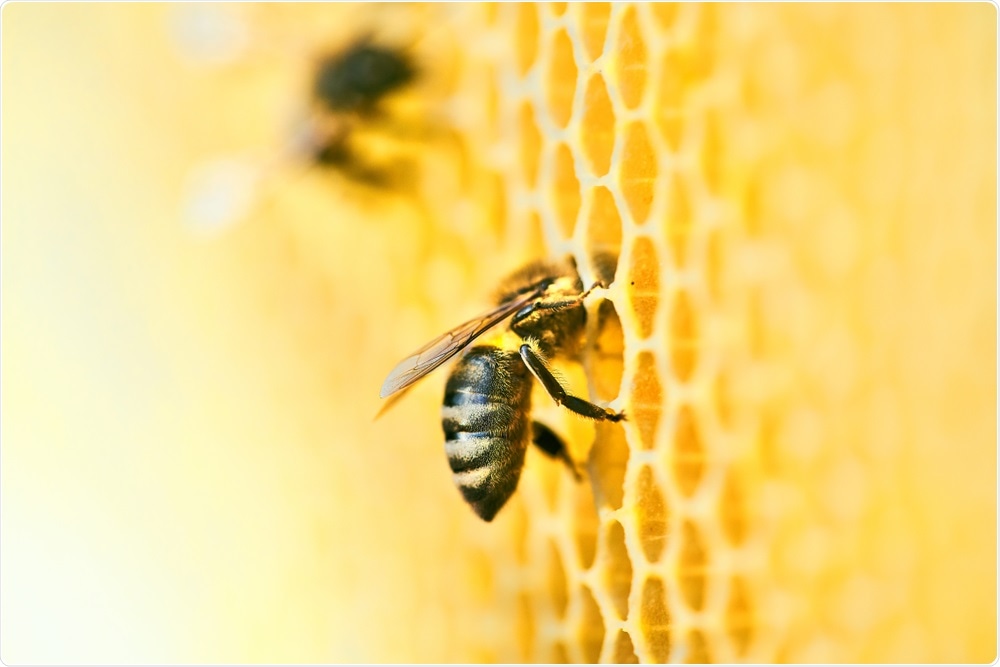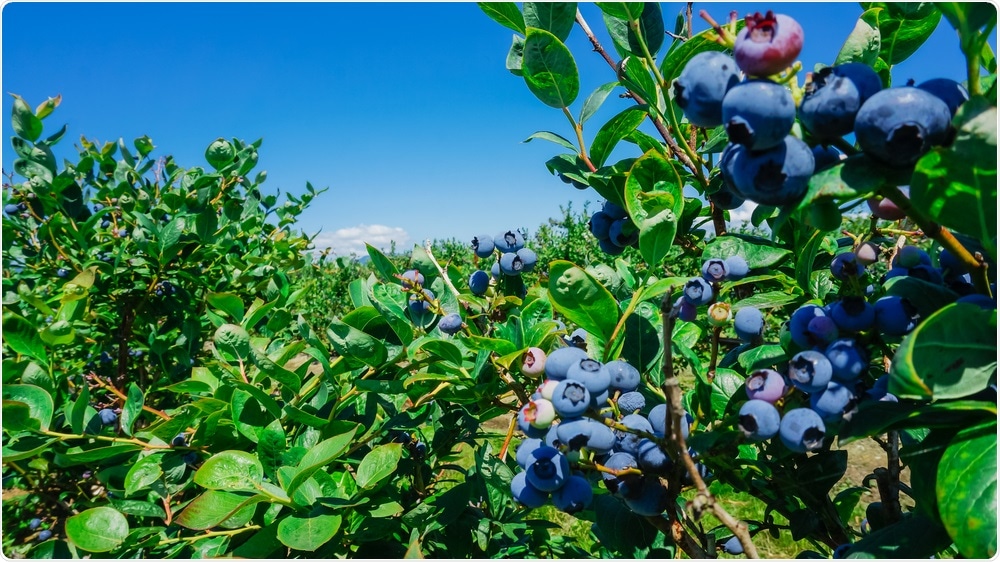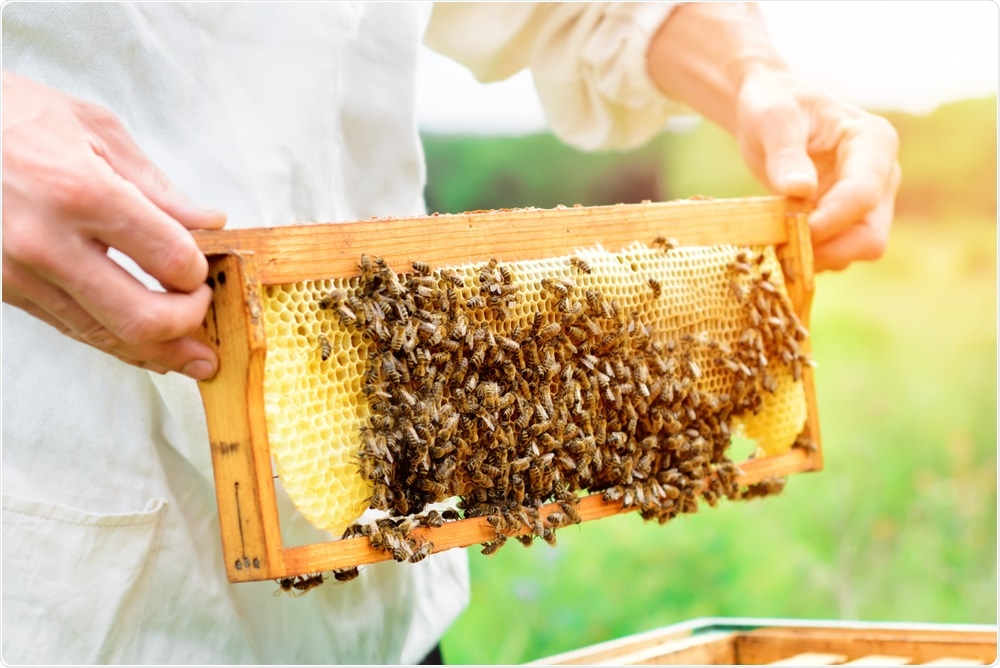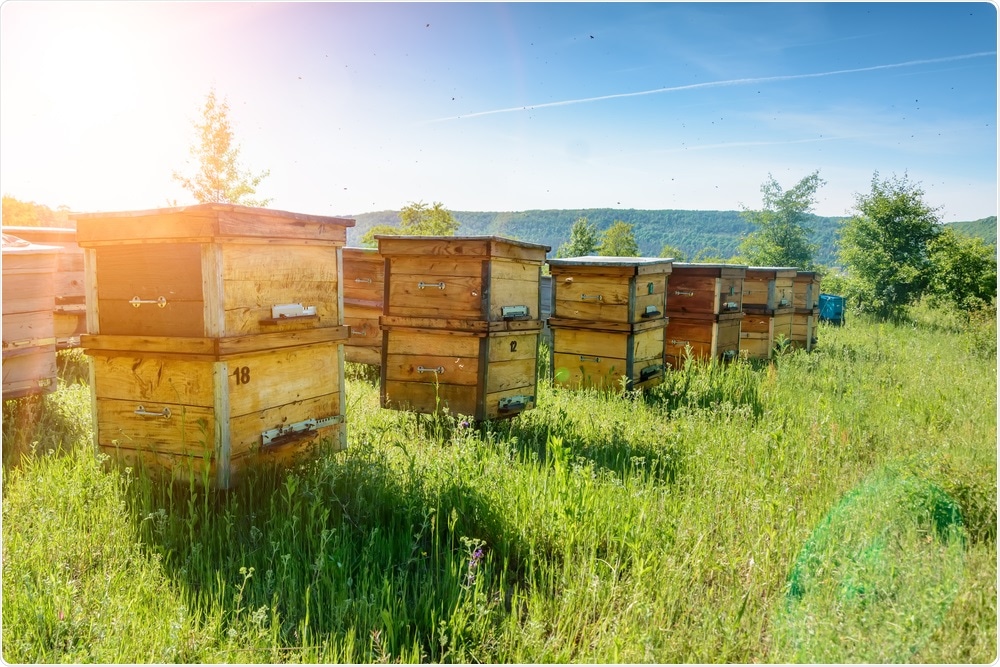In this interview, Dr. Peter Awram from the Worker Bee Honey Company discusses the urgent need for comprehensive analytical techniques in the honey industry and explains why NMR spectroscopy could soon become the gold-standard for honey profiling in North America.
How big of an issue is honey fraud, particularly in North America?
It's a huge issue. At the moment, Canada produces between 92 and 98 million pounds of honey every year. There is so much fraud that it would take very little for scammers to increase their production and replace the entire Canadian market if they are allowed to continue.
When I started looking at the issue a few years ago, it was clear that the number of counterfeit products on the market was so significant that the possibility of the whole honey industry being destroyed by the devaluation of honey in a decade or two was very possible.
 Aleksandr Rybalko | Shutterstock
Aleksandr Rybalko | Shutterstock
Part of the issue is that honey fraud is not well understood. The testing methods are poor and the main method that people use – stable isotope ratio analysis (SIRA) – is not very effective anymore. This means that nobody has a good understanding of what’s happening in the industry.
The numbers of hives vs honey production don’t make any sense but indicate that the level of fraud is significant. We need to determine how many fake products are reaching the market and where they are ending up.
The Canadian Food Inspection Agency recently released a report in which they used both SIRA and NMR to look at the honey industry in Canada. They found that 22% of the samples that were analyzed were fraudulent in one way or another, but they only looked at a small amount of honey. It is clear from these results that testing needs to be much more widespread and extensive.
Similar studies around the world show similar or higher evidence of fake honey, but many of those studies are based on retail honey that is found on the grocery store shelves, and do not include products that contain honey, such as honey mustard sauces or cereals.
These types of products are not under the same scrutiny, and so the vast majority of that stuff is probably fake. When you apply this to the import, export and production numbers, the potential amount of fake honey rises exponentially.
From your experience, what are the most common impurities and additives found in fraudulent honey?
We see a lot of the starch syrups with rice syrup (at a tenth the cost of honey) becoming the dominant one because it’s cheap and easily available. Corn syrup is still in use but because it is easily found using the standard methods its use is declining.
Often there is little consistency with the fraud when you start looking it becomes apparent that the origin is all over the place.
It’s clear that the person is just buying from the cheapest source. One day a product will contain rice syrup and the next it will be ultrafiltered from an area that uses banned chemicals. Sometimes it will be real because they have beaten down prices so low that beekeepers just need to sell the honey to pay bills.
NMR in Honey Testing: The New Standard
How do counterfeit honey products affect other areas of the agricultural industry and the Canadian economy more widely?
In Canada, the beekeeping industry is not particularly vibrant. We are a small family business, and yet we make up a significant portion of the hives in Canada. As a country, we could probably handle two or three times the number of hives that we have at the moment without straining.
There are millions of hectares of canola available for honey production, but there are no bees on them. Beyond no honey, that also means the farmers lose production from the pollination that bees would provide.
We have the landscape, and there are lots of good forage areas where hives would benefit. However, it is not economically viable.
There is a continual shortage of bees for pollination throughout Canada. In BC, there are not enough hives to satisfy the requirements.
In the Lower Mainland, blueberries need pollination for proper fruit production, but there is a shortage every year. This is also seen in blueberries on the east coast and for tree fruit production in other areas of Canada.
This is the situation throughout North America. In California, there is a huge demand for almond pollination and hives are transported across the country yet there are still never enough hives available. The problem is pollination fees are not enough to cover costs of hive upkeep alone and fair honey prices are required to justify increasing hive numbers.
What methods are currently used for the detection of fraudulent honey in Canada?
Currently, there is only one official method throughout the world for testing honey, AOAC-998.112, the SIRA method for isotope ratio analysis. This has limitations and cannot detect rice syrup.
There are a number of methods that have been developed to deal with the deficiencies of SIRA, but they haven’t been standardized or consistently applied. They are usually based on detecting a single marker which presents a problem since the scammers find ways to get around the test.
In general most of these methods require sophisticated personnel to perform the testing which increases cost and processing time.
NMR in Honey Testing: The New Standard Part 2
How can NMR be used to improve the detection of fraudulent honey?
Nuclear Magnetic Resonance (NMR) is the next generation of lab analysis. Unlike the other testing methods where you are looking for a specific marker, you are able to identify at all of the organic molecules in the sample.
It is a very useful technique because it provides a lot of data which can be applied in different ways. Magnetic Resonance is really two tests in one. First you can measure the absolute value of a number of compounds and you can ensure they are in the ranges that would be expected.
Where the technique really shines is when you start looking at the entire spectrum – all the molecules in the sample. The flower, the soil, the weather during the nectar flow, all affect the composition of the honey.
This generates a “finger print”, then if you have a database of honey “finger prints” you can start identifying what country the honey came from, which flowers the bees were visiting. You don’t have to know what all the compounds are, just see the indications on the spectra
Blueberry honey is a good example of this. We see certain peaks in the spectra that are only present in honey from blueberry flowers. We can also see the amount of these peaks decrease during the season as the blueberries stop flowering and the raspberries start blooming allowing us to have an idea of what percentage of the honey is blueberry vs raspberry.
Blueberry honey is a premium product and demands a higher price. With Magnetic Resonance, we can look at a sample and if we don’t see the peak that indicates blueberry honey we know that someone is trying to pass off something else as blueberry honey.
We see these differences in other flowers as well. Canola from North America looks different compared to European canola. Fireweed, a very desirable honey that we obtain in the mountains looks very different from most of the other things that are in the database right now.
This is something that is not as easy to fake because you cannot just take things out, you have to add in the constituents of honey that are not present in starch syrups.
Ultimately, if someone wanted to build up a fake honey product from scratch, molecule by molecule, they could. However, scammers are not interested in doing that. They are more interested in making money, quickly. The moment that you make it difficult and expensive for it to be worth their while, they are going to target something else.
How does non-targeted testing help you to stay ahead of fraudulent companies?
NMR helps us to stay ahead of the scammers because we get a really good idea of what should be in the honey and what doesn’t belong there.
It’s no longer possible to remove the traces left by the starch digestion and clean up partial degradation products and contaminants, with Magnetic Resonance you also have to add in the other components that make honey special. This then becomes a much bigger problem for them to the point where it is no longer profitable for them to slip in cheap things like rice syrup.
 Trong Nguyen | Shutterstock
Trong Nguyen | Shutterstock
What is the IAFBC and how is this organization helping to stop fraudulent honey from entering the market?
We have been very fortunate to have a government in British Columbia that is very supportive of the beekeeping industry. They are funding a number of initiatives to promote bees.
We have been able to get funding from the Investment Agricultural Foundation (IAF) of BC to generate a database of BC honey. This will allow us to characterize the honey produced in BC. BC produces some very high-quality specialty honey. By characterizing it with NMR we will provide BC beekeepers a tool to distinguish their honey and add value.
The project requires a lot of samples of authentic honey, so the funding is vital. The money provided by the IAF allows us to go out and pull honey directly from the hive.
We have developed a process where we can track the honey directly from the hive to generating the “fingerprint” data. We take pictures, identify individual hives and frames where the honey was collected.
Tamper-evident seals, GPS tracking and pictures allow us to document a chain of custody for the sample. This allows us to provide a secure database with accurate data, and that will let us create molecular fingerprints for every geographic region.
This method gives us good information in terms of floral sources and geographic region so that we can nail down the fundamental composition of the honey.
Why do you use the NMR FoodScreener from Bruker?
When looking at the techniques, it was clear that the existing methods were not working. At the time Bruker had just released the first iteration of the FoodScreener.
I contacted them and started discussing the technology. I then sent some blind honey samples to Bruker, and the results were amazing. It was clear that the company understood the data very well.
There is a lot of development behind the method. Ring tests, where laboratories around the world test the same samples, blind, allow labs to ensure that the same results are generated no matter which machine performs the test. Bruker has received ISO accreditation for the process. This is an analytical laboratory standard that ensures consistency in results.
The method is well defined and will be the gold-standard over the next decade and beyond. While starch syrups can be identified now, as the database increases the surety of the method improves. NMR will be able to keep up with advances by the scammers.
 kosolovsky | Shutterstock
kosolovsky | Shutterstock
How has the database developed over the past year?
The database is growing quickly. The second iteration of the database has been released with over 19,000 samples. I have been working heavily with Bruker in order to get samples directly from the hive into the database. Every time we get another sample, our data improves.
Honey has generally been considered a commodity in North America, with consumers thinking that it is all the same. Everything on the supermarket shelf tends to look the same. This is changing as consumers become more aware.
Honey should be thought of as more like wine. Its qualities depend on factors like the flower that it comes from and the weather that year. Magnetic Resonance gives us the tools to substantiate this.
The existing database does not cover North America as well as it should. It does not cover a lot of the world, and we are doing everything we can to change that. I have got a lot of samples from BC now because I have the funding for it.
We are also starting to cover Western Canada as well as down into the United States, and have analyzed samples from there too. We are also getting a lot of samples from Mexico and Australia because this is a world wide problem
Beekeepers are very supportive of this technology. Everyone is becoming increasingly aware of how significant this problem is and by providing me with samples, our industry is growing stronger.
How do the regulations surrounding honey in Canada compare with the USA?
Canada has honey standards but they are not well enforced. It is similar in the USA. There is work being done to generate a more specific standard of honey that will allow better prosecution for fraud. But one of the big issues in food fraud is that there is not enough actual testing going on.
Traceability often consists of a large amount of paperwork. These systems can be forged and tend to put a huge cost burden on honest producers. There needs to be considerably more testing to ensure that these systems work and we are not seeing enough from regulatory bodies.
The best method is to randomly sample the food directly. This is where we need the government to take the initiative to get those samples and test it at the retail level. As well as this being more effective, it may actually be cheaper.
Do you think that the Canadian Food Inspection Agency (CFIA) should adopt the NMR FoodScreener as the gold standard for honey profiling?
The Canadian Food Inspection Agency (CFIA) is looking at NMR. The push by beekeepers such as myself and others across Canada is somewhat responsible for this. As I mentioned, they did a study in which they took every sample that was collected in 2018, and ran it against both the SIRA and the NMR.
The CFIA looked at just under 300 samples. The results show that this is not nearly enough. The adulteration is so pervasive that this number needs to increase to the thousands.
 kosolovsky | Shutterstock
kosolovsky | Shutterstock
How are honey samples prepared for analysis using NMR? How does this compare to SIRA?
One of the nice things about NMR is that the sample preparation is very straightforward. The sample prep doesn’t change the honey, so you don’t need to worry that you are altering the compostion.
A small dilution is carried out, some larger particles are removed, and then the pH is measured. A sample can be run in half a day – which is much faster than SIRA.
The entire method is double checked throughout so any errors are caught right away. Standards are run before tests that allow proper tuning of the machine and to ensure that there were no errors in sample prep or because of bad reagents. Sample preps are not altered during measurement so it is possible to run them again if desired.
This is one of the easiest most straightforward methods that I have ever seen done, and I have done a lot of work in labs from molecular biology to microbiology. This means that reproducibility and reliability are increased. Very few things are this simple yet can produce so much data.
What changes would you like to see in the honey industry over the next decade?
I would like to see food fraud taken more seriously. Often, regulatory agencies do not consider anything to be significant unless there is some sort of health issue.
It is time for the regulatory agencies to become more proactive and tackle this problem head on. It is not just the honey industry that is affected by fraud, many other foods are also being adulterated. Even if the honey industry is cleaned up, scammers will move to another type of food.
NMR is extremely versatile and can be applied to these other foods too. We already have the ability to analyze wine and juices in house, and there are new protocols emerging for oils. Beyond liquids, solids like coffee can be analyzed.
All you need is a method to extract components. Coffee is extracted every day just by adding hot water. This can apply to all sorts of foods and you can take it into other fields such as nutraceuticals and health supplements.
In my opinion, the FoodScreener is a very cost-effective piece of technology for the honey industry. It is not an expensive test given the amount of data that comes out of it or compared to the costs of standard testing methods.
With the FoodScreener, results can be received straight away, so that the problem can be addressed immediately. Using older technology, the whole process takes much longer. Turnover in supermarkets is less than 6 weeks usually. If testing results can’t be obtained quickly suspect batches will disappear from shelves before it is possible to take action.
Speed of analysis is essential for stopping adulteration. Test answers are needed in less than a week so that they can be addressed on the spot and fake food can be pulled from the shelves.
Where can readers find more information?
About Peter Awram, Ph.D., and the Worker Bee Honey Co.

Dr. Peter Awram is a second-generation beekeeper at Worker Bee Honey Company, the largest beekeeping operation in British Columbia, Canada. Founded in 1973, the business has branches in both British Columbia and Alberta. He is also the CEO of True Honey Buzz, an organization creating a database of authentic honey samples.
Peter became interested in the FoodScreener a few years ago when it became apparent just how bad the adulteration of honey had become. He is now using the technology to develop a database of honey profiles and to address adulteration in the marketplace.
Peter obtained a Ph.D. with a focus on molecular biology and has written several peer-reviewed papers. This combination of science and beekeeping is why it became apparent to him that NMR honey analysis was essential to the future of the honey industry.